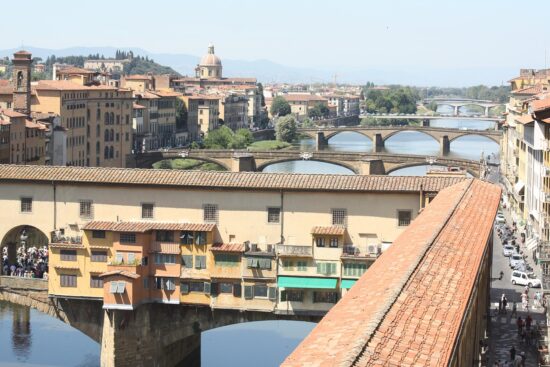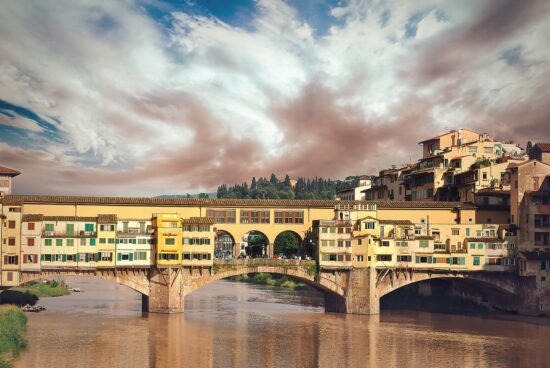Ponte Vecchio
Next natural step after the Uffizi Gallery is of course the Ponte Vecchio. One of the most recognizable symbols of Florence, this unique bridge is the only one that survived WW2 Hitler, who in 1938, visited Florence in search of alliances. It is said that the fascination exerted by the bridge and the panorama that it offers conquered Hitler and saved the bridge’s life in 1944, although in fact as one can read on the honorary plate it was the German representative in Florence named Gerhard Wolf who was the true savior of the bridge.
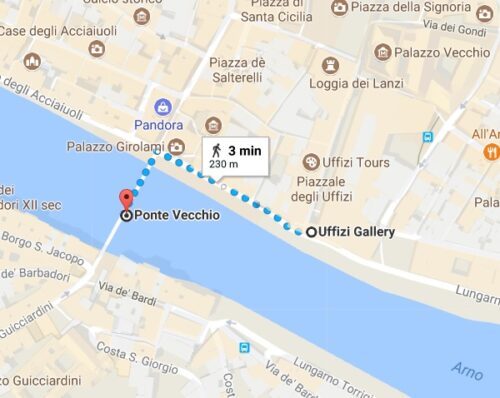
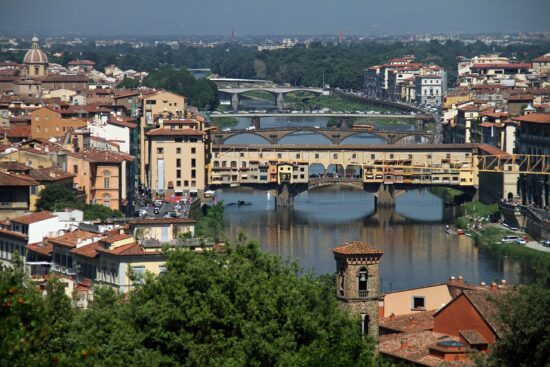
Different fate was reserved for Via Santa Maria, Via Guicciardini and the access areas to Ponte Vecchio, which were heavily damaged and then reconstructed in the 1950’s. From the birth of the city , attempts were made to build bridges across the Arno, but all were destroyed by the river floods.
The current position of the bridge is traced back to the era of Charlemagne, between 9th & 10th century. In the XII and XIV century there were three serious damages always due to the Arno floods, but the one in 1333 was one of the most violent. In 1345 it was rebuilt as we see it today according to Vasari, by Taddeo Gaddi.

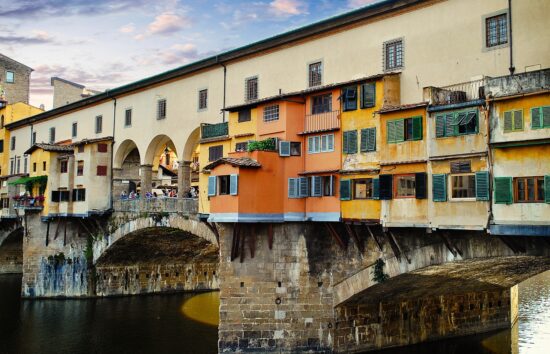
Approximately 100 years later the bridge’s shops were given to the butchers, so that they could throw the remains directly into the river without dirtying and infesting the smell of the city. In 1565 Giorgio Vasari was commissioned by Cosimo I to build what has passed in history such as the Vasari Corridor a tile-roofed corridor running from the Uffizi across the Ponte Vecchio on its way to link Palazzo Pitti, the private home of the Medici, on the south side of the Arno. The corridor is one kilometer long and was built in just 5 months.
By order of Ferdinando I , the butcher’s shops were replaced by those of goldsmiths and jewelers in 1593, since the Grand Duke did not like a lowly trade under the windows of the corridor. The structure of Ponte Vecchio was innovative: consisting of three wide arches lowered for the first time in the West since the original Roman model which provided for the exclusive use of round arches that would not have been indicated for this bridge as they required a large number of arches in order for it to be more stable. On its model was based in the 16th century the Rialto Bridge in Venice and many others. Description translation from an article of http://www.firenzetoday.it/
